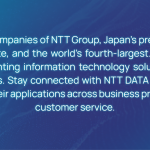Robotic Process Automation is known as the world’s largest enterprise software robot. It is capable of automatically handling large volumes of work in various fields.
To develop into what it is today, RPA has undergone a process of constant updating and innovation to become a perfect version. So how to effectively automate RPA by a 3-step process? In the following article, Winactor Support will help you answer that question.
History And Future Of Process Automation Robots
As you all know, in the early years of the industrial revolution 4.0, people knew how to create several automated technologies that significantly improved labor productivity.
And to develop the robot that automates the process like today, they had to go through 4 stages of learning, growing, optimizing, and putting it into use. RPA only really exploded and developed strongly from the 2000s onwards.
Year by year, Robotic Process Automation is gradually asserting its value through a series of powerful practical tools that contribute to optimize business processes. It helps businesses automate work, limit manipulation errors, and process data on the system efficiently.
In the future, RPA will indeed become the world’s most influential enterprise software. Because RPA constantly provides businesses with practical tools. It’s more involved in their workflow.
For many companies, RPA has become their perfect virtual assistant that can apply bots to almost any task they are bored with. In addition, the system of RPA bots has a much lower cost than manual labor many times. At the same time, its working efficiency is 3 times higher than that of humans.
- Read more: History of RPA – Robotic Process Automation
Role of RPA
RPA’s full name is Robotic Process Automation. This type of software robot is capable of performing repetitive tasks with fixed logic.
Everything that RPA does is done entirely on computers. The bots will operate independently without the intervention of the staff. However, to ensure that the software robot works effectively, you will need the support of a process supervisor.
Currently, Robots are capable of taking on many jobs in the office block: sending automatic emails, entering data, checking and searching for information,….
At the same time, bots can handle the large workload quickly, bringing high working efficiency for businesses. The unique feature of RPA is its extremely high level of reliability. It is capable of accurately processing many essential data in a short time.
In addition, these bots will store all information on a central system. Therefore, Enterprises can access and request processing whenever they need. The bots will follow the goals and processes that the business has set out before.
With the possession of great tools, RPA has been chosen by many businesses for its process.
Typically, there are available fields: insurance, banking, marketing, and sales,…. In this way, some jobs that are prone to errors, such as processing contract minutes, entering customer data, will be effectively handled by RPA without any manipulation errors.

3-Step Process To Automate RPA
Explore the Process
The first step that you need to take before applying to RPA is to explore the process. In this step, you will need to experiment and understand which techniques are suitable for automation.
Also, before starting with the RPA process, you will need to consult with different departments in the business.
You need to explain to them that: “RPA is just a software tool that helps businesses in some fixed, repetitive work. It doesn’t take any of our jobs away.” Employee approval will contribute to more effective implementation of the RPA process.
In addition, in step 1, you also need to analyze the processes and technology used closely. At the same time, you will need to answer the following questions:
- What are the positive/negative factors of future RPA?
- Is the investment in RPA worth it?
- Will the human workforce be affected?
- What is the ROI in process automation?
When you have answered all of these questions, you have completed step 1.
Automate Processes
Once you have identified and found the proper process, it becomes simpler to apply RPA. To get the right performance from robotic process automation, you will need to keep a few things in mind:
First, you will need to create your RPA software team in harmony with the IT team. This team will include the automation system developer and RPA’s progress monitor.
Second, you need to choose the correct model for RPA. A perfect model would include: tools that handle multiple tasks across multiple channels, and there should be a one-size-fits-all tool.
Finally, before you implement process automation, you’ll need to set a few specific goals along with a timeline for achieving them. This work aims to measure the performance quality of RPA.
Optimize Processes
In addition to the ability to automate practical work, robotic process automation also has strong adaptability. You can thoroughly apply RPA to legacy systems easily and integrate new features to expand the efficient process.
Then, RPA will generate data that can be applied to other areas of the business. From there, they can better understand the existing process. At the same time, find out the bottlenecks that cause enterprises to have limited labor productivity.
To improve, they will need to optimize the automation robot to make it more efficient. Enterprises will check the automation processes, participate in help from the IT team to improve and upgrade the system. From there, businesses will ensure the performance of the RPA system.
To own RPA bots capable of working flexibly in many different fields, you need to use the services of units with long experience in the field of automation. If you are still wondering about a practical solution provider, then NTT is the perfect choice for you.
And WinActor – RPA solution is their product. As mentioned, WinActor is capable of working effectively in many fields. It provides a wide range of essential and intelligent tools that contribute to significant productivity improvements for businesses.
Conclusion
Hopefully, the article will help you better understand the 3-step process to apply RPA and its development process.
For many businesses, the use of software robots is the best choice to optimize workflow efficiency. In the future, when many new features are released, RPA deserves to be the best enterprise software in the world.

WinActor is an RPA software solution by NTT DATA Corporation to help businesses master technology, create breakthroughs in the digital age 4.0.




